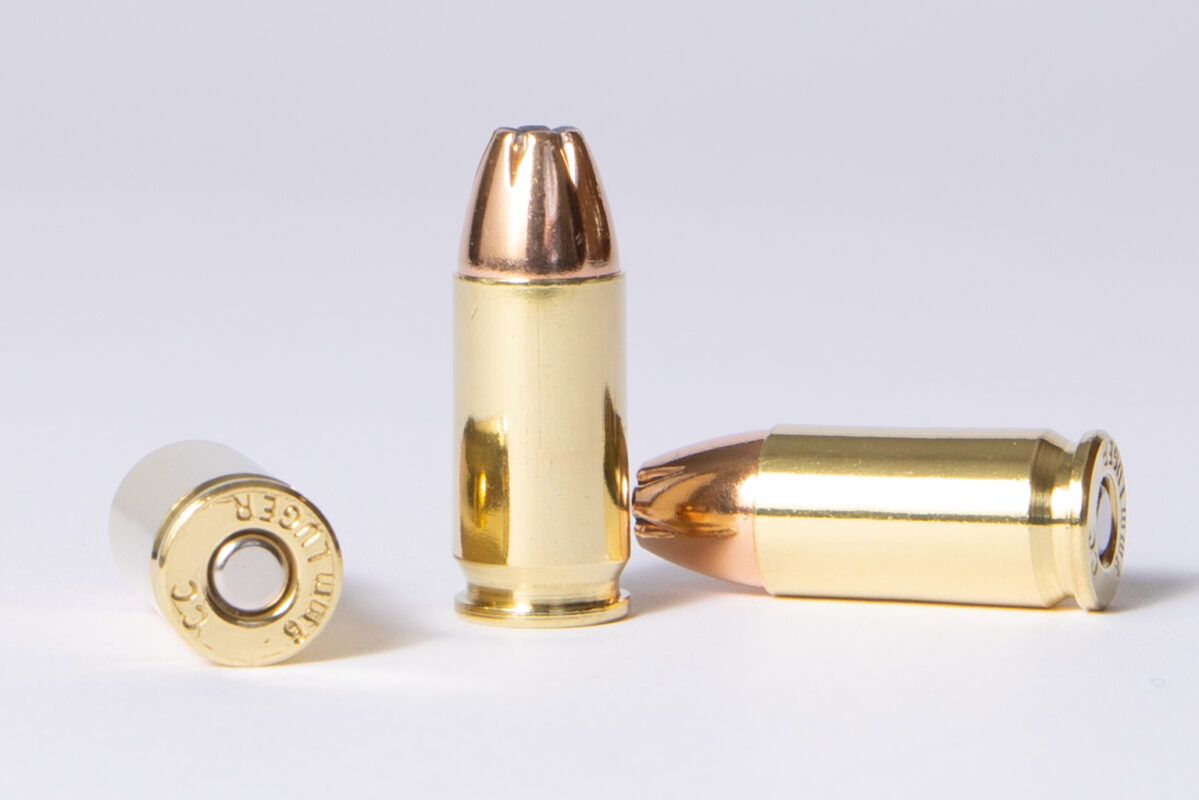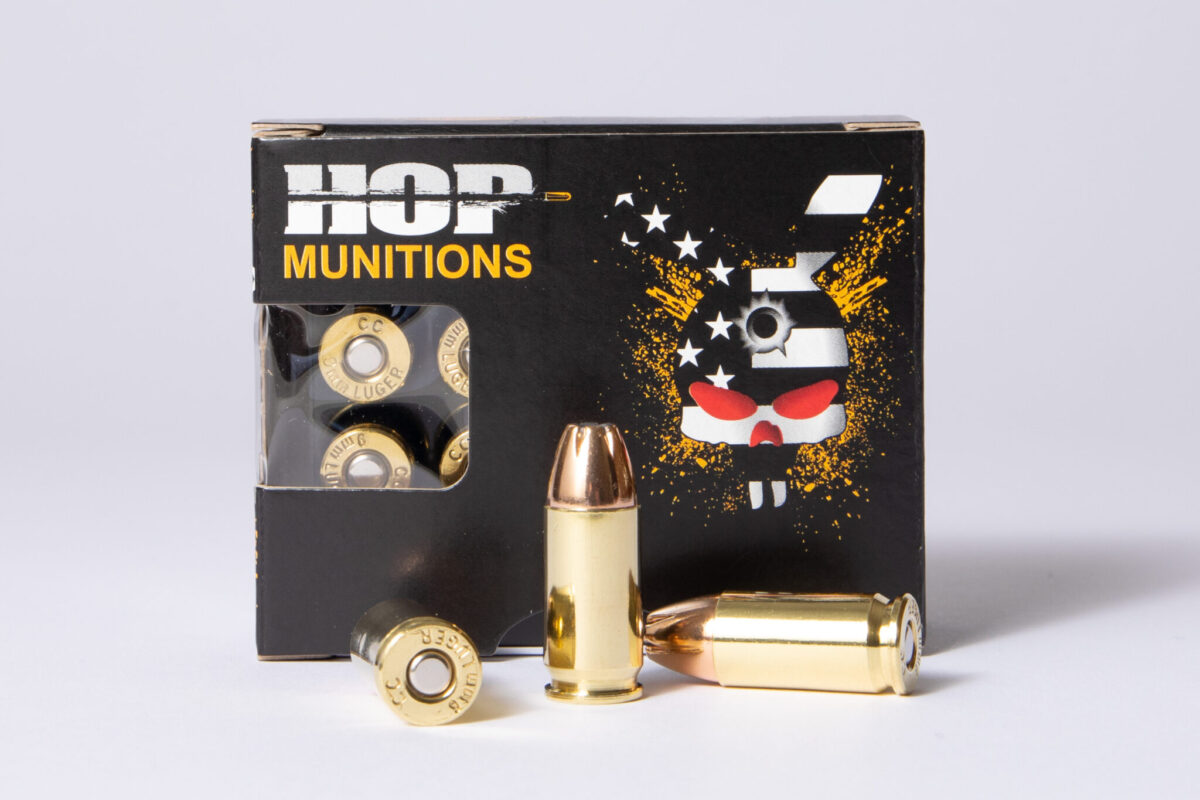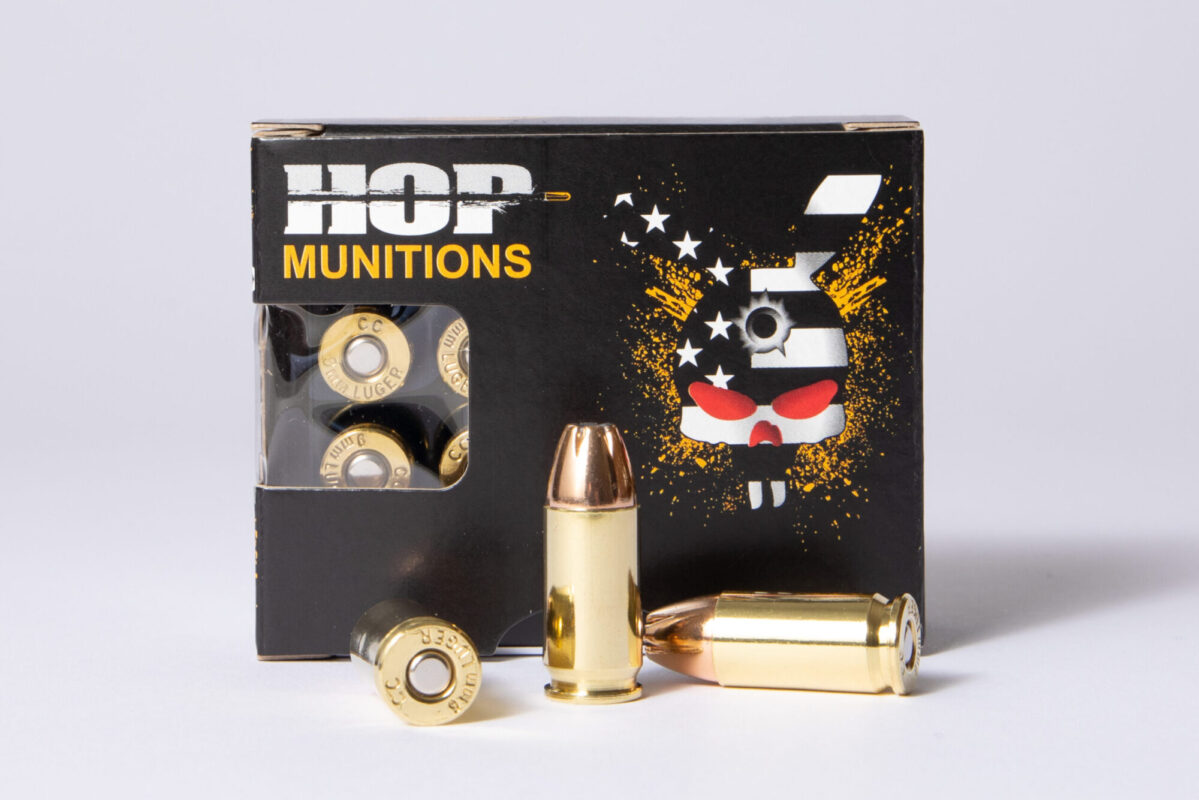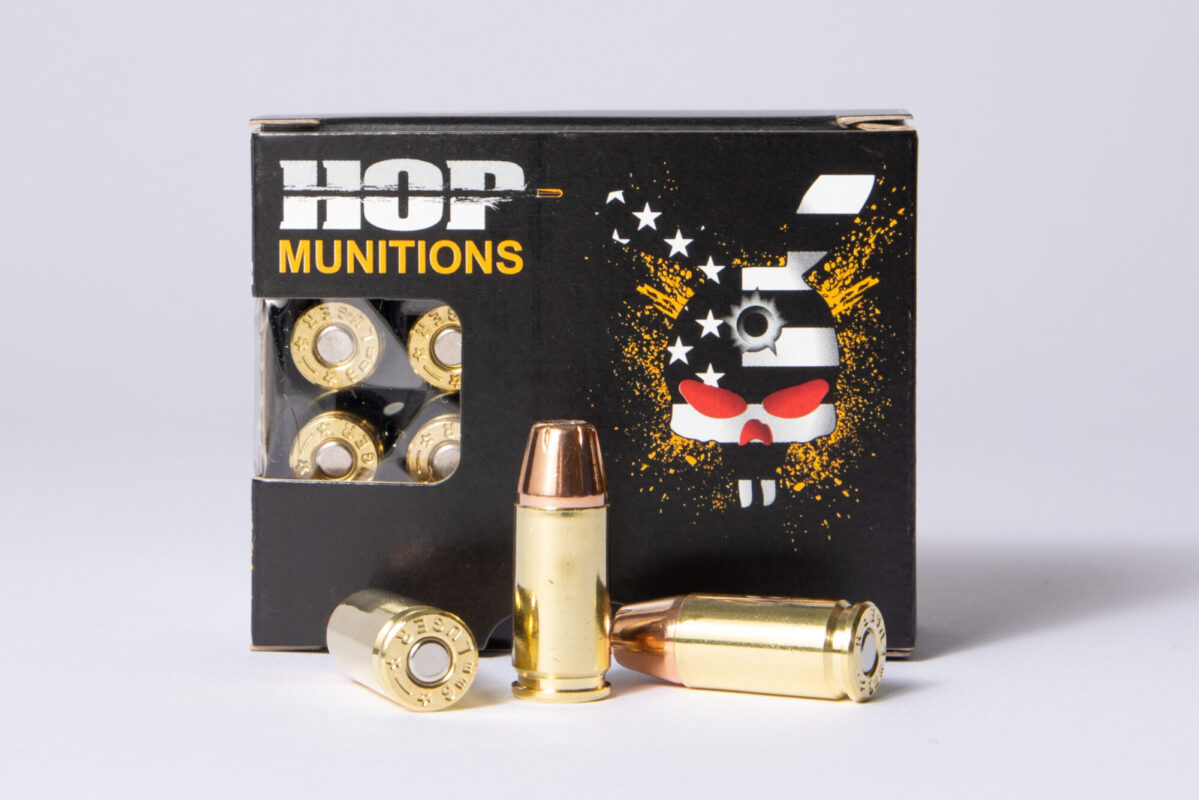HOP Blog
Best 9mm Ammo For Self Defense
When it comes to self-defense, choosing the right ammunition is paramount. In a high-stakes situation, the performance of your firearm and the ammunition it carries can make all the difference. With countless options available, finding the best 9mm ammo for self-defense can be a daunting task.
HOP Munitions has emerged as a trusted name among firearm enthusiasts and self-defense practitioners alike. We have developed a range of 9mm ammunition specifically designed to excel in self-defense scenarios. Our dedication to providing reliable and effective ammunition has made them a go-to choice for those seeking optimal performance when it matters most.

What sets HOP Munitions apart from the competition is their meticulous attention to detail throughout the manufacturing process.
From sourcing top-grade components to employing proven manufacturing techniques, HOP Munitions ensures that every round leaving the facility is made to perfection. This dedication to quality control guarantees consistent performance and reliability, vital attributes for any self-defense ammunition.
Whether you prioritize maximum stopping power, reduced recoil, or consistent expansion, HOP Munitions has 9mm self-defense ammo tailored to your requirements.
Beyond our commitment to performance, HOP Munitions also prioritizes safety. Our 9mm ammunition undergoes rigorous testing to ensure it meets or exceeds industry standards, providing users with peace of mind. Whether you’re a seasoned shooter or a first-time gun owner, the reliability and effectiveness of HOP Munitions’ 9mm self-defense ammunition are qualities that inspire confidence in critical situations.
By the end of this article, you will have a solid understanding of why HOP Munitions 9mm ammo is a top contender for personal protection, enabling you to make an informed decision when selecting ammunition for your self-defense needs.
Different Bullet Types For Self-Defense
The selection of bullet type plays a central role in the decision-making process when identifying the most appropriate self-defense round. It can determine various aspects ranging from the price point to the performance of the ammunition, which is crucial during self-defense scenarios.
The bullet type primarily governs the behavior of the round on impact. For example, certain bullet types might expand or fragment upon hitting the target, whereas others may maintain their shape and pass through the target.
These distinctions can significantly affect the stopping power of the round, its potential to over-penetrate and cause collateral damage, as well as its effectiveness against various types of barriers.
Hollow point bullets have become the standard choice for self-defense ammunition. They are designed to expand upon impact, increasing their diameter and slowing down to deliver maximum energy to the target. This makes them more effective at stopping an attacker quickly, as well as minimizing the risk of over-penetration which could endanger innocent bystanders.
However, within the broad category of hollow point bullets, there are numerous variations each with its own unique characteristics and optimal uses.
Hollow Point (HP)
Hollow point bullets, as the name suggests, feature a pit or hollowed out shape in the tip, often giving it a conical appearance. This design contributes to the bullet’s capacity to expand or “mushroom” upon impact.
Essentially, the concave tip of the hollow point bullet allows for rapid deformation and expansion once it strikes a target. This expansion dramatically increases the diameter of the bullet, allowing it to cause larger wound channels, which can help incapacitate a threat more quickly.
Hollow points have traditionally been a popular choice for both hunting and self-defense applications. For hunting, the mushrooming effect of the bullet causes a larger wound channel in the game, leading to a quicker, more humane kill.
For self-defense, the expanding bullet is effective in stopping threats as it delivers more of its kinetic energy to the target, as opposed to passing through the target and potentially causing collateral damage.
However, it’s essential to note that bullet technology has significantly advanced over recent years. More sophisticated designs and materials have emerged that offer even better performance than traditional hollow points.
For instance, advancements have been made in bonded jacketed hollow points that retain their structure even better during expansion, or in specialized bullets that fragment upon impact to deliver multiple wound channels.
Jacketed Hollow Point (JHP)
The Jacketed Hollow Point (JHP) bullet represents an evolutionary step in the design of traditional hollow point ammunition. Its defining characteristic is the application of a jacket, typically composed of harder metal such as copper, which envelops the softer lead core of the bullet.
The principal advantage of this additional layer is that it allows the bullet to maintain its shape more effectively during flight, enhancing its accuracy.

The design concept of a jacketed bullet isn’t entirely new and can be seen in the Full Metal Jacket (FMJ) bullet, a popular choice for practice and competition due to its greater accuracy and less barrel fouling. However, unlike the FMJ, the JHP still retains the hollow point in its design.
This fundamental feature is where the bullet gets its capacity to expand upon impact, which is crucial for self-defense and hunting scenarios.
The jacket of the JHP doesn’t cover the entire bullet – it leaves the tip, or the hollow point, exposed. Upon hitting a target, the jacket helps control the rate and consistency of expansion. The jacket prevents the lead core from expanding too rapidly or fragmenting, resulting in a larger but more controlled wound channel.
This controlled expansion also lessens the risk of over-penetration, which is particularly important in self-defense situations where bystander safety is a concern.
In terms of performance, the JHP is often more accurate than a traditional hollow point because the jacket assists in maintaining the bullet’s aerodynamics and stability during flight. The jacket also reduces lead fouling in the barrel, enhancing the firearm’s lifespan and reliability.
Bonded Jacketed Hollow Point (BJHP)
The Bonded Jacketed Hollow Point (BJHP) bullet is a further refinement of the Jacketed Hollow Point (JHP) design. It shares the basic features of a JHP — a lead core covered by a harder metal jacket with a hollow point at the tip. The primary difference lies in the manner that the jacket and the core are linked: in a BJHP, the jacket is electrochemically bonded to the lead core.
The process of bonding creates a strong, inseparable link between the jacket and the core. This attribute gives the BJHP a significant performance edge in certain situations.
Unlike standard JHPs, where the jacket can sometimes separate from the lead core upon impact, the bonded design ensures that the jacket and core remain as a single unit. This guarantees consistent and reliable expansion, even after passing through tough barriers.
The bonded design significantly enhances the BJHP’s performance when penetrating heavy clothing, car windshields, thin metal, and other barriers. Such barriers can often cause non-bonded bullets to fragment or deform, which may lead to decreased penetration or less effective wound channels.
With a bonded bullet, however, the jacket and core stay together, allowing the bullet to retain more of its weight, better maintain its shape, and penetrate deeper into the target.
The resulting wound channel from a BJHP is often larger and more consistent than that from a standard JHP. Since the BJHP retains most of its weight and shape during expansion, it’s able to deliver a significant amount of kinetic energy to the target, causing more extensive damage.
While Bonded Jacketed Hollow Points might be more expensive than traditional Jacketed Hollow Points, many individuals and law enforcement agencies opt for them due to their enhanced barrier penetration and greater wound channel consistency.
These performance advantages make BJHPs an excellent choice for self-defense situations, particularly in urban environments where encounters with barriers are more likely.
Understanding Terminal Ballistics for Self-Defense
The 9mm round, a popular choice for self-defense, is a versatile cartridge with an impressive history of performance in law enforcement, military, and civilian use.
Its terminal ballistics – the study of how the bullet behaves upon hitting the target – is largely dependent on the type of bullet used, its velocity, and the design parameters that govern its expansion and penetration characteristics.
Bullet Type and Design
The majority of 9mm self-defense rounds use some variant of a hollow point design. Hollow point bullets are engineered to expand upon impact, increasing their diameter and causing a larger wound channel than a non-expanding bullet of the same caliber would.
This expansion is a critical factor in the terminal performance of 9mm ammunition, as it not only causes more significant tissue damage but also helps to prevent over-penetration that could risk collateral damage.
There are several variants of hollow point design, such as regular hollow points (HP), jacketed hollow points (JHP), and bonded jacketed hollow points (BJHP), each offering different levels of performance and reliability.
Velocity
While not as high-velocity as some rifle rounds, the velocity of a 9mm bullet still plays a significant role in its terminal ballistics. Higher velocity rounds generally have a more significant temporary wound cavity – the stretching and tearing of tissue caused by the bullet’s passage – due to the increased energy transfer.
Additionally, many hollow point designs rely on velocity to function correctly; too slow, and the bullet may not expand as designed, too fast, and it might break apart or over-penetrate.
Penetration and Expansion
The FBI standards for self-defense ammunition recommend a penetration depth of 12-18 inches in ballistic gel, a standard medium for testing bullet performance.
This penetration depth is considered optimal for reaching vital organs while minimizing the risk of over-penetration. Many 9mm self-defense rounds can achieve this, particularly when loaded with modern, well-designed hollow point bullets.
Regarding expansion, the goal is to have the bullet expand as much as possible without sacrificing the required penetration depth. An expanding 9mm bullet can reach up to twice its original diameter, significantly increasing the size of the wound channel.
Energy Transfer
An important aspect of terminal ballistics in self-defense situations is how effectively a bullet transfers its energy to the target. A 9mm round carries significant kinetic energy, and an effective self-defense round is designed to transfer as much of that energy as possible to the target, causing immediate and significant damage.
In conclusion, the terminal ballistics of 9mm ammunition for self-defense are influenced by many factors, with bullet design, velocity, penetration, expansion, and energy transfer being among the most significant. With modern ammunition design techniques and materials, the 9mm round has proven to be a highly effective self-defense round, offering a good balance of power, control, and capacity.
Best 9mm Ammo For Self Defense
In the field of terminal ballistics, a delicate balance between energy transfer, expansion, and penetration depth is key for a bullet’s effectiveness, especially for self-defense situations. While smaller calibers such as .380 Auto and .38 Special can be effective, the 9mm cartridge is widely favored for its balance of power, capacity, and ease of use.
High-energy 9mm bullets that expand widely are particularly desired, as they are more likely to incapacitate a threat quickly. Expanding bullets create larger wound channels, causing more damage to vital organs and systems, while high energy transfer increases the shock effect on the target.
Yet, it is crucial that these rounds still adhere to the FBI’s penetration standard of 12-18 inches in calibrated ballistics gel. This standard is considered a good measure of a bullet’s ability to penetrate deep enough to disrupt vital organs, even if it encounters barriers or has to penetrate through an arm before reaching the torso.
While HOP Munitions may not be as well-known as Hornady or Federal, their high-energy 9mm rounds have demonstrated excellent performance in ballistic tests.
The bullet design ensures rapid and consistent expansion upon impact, and the high-energy load delivers a powerful shock to the target. Furthermore, these rounds have been shown to reliably meet the FBI’s penetration standard, making them an effective choice for self-defense.
9mm | 115gr Jacketed Hollow Point
In the development of our HOP Munitions 9mm 115 grain Jacketed Hollow Point, we sought to engineer a cartridge that upheld our standard for precision while simultaneously satisfying the power requirements for effective self-defense.

The result was this highly efficient round, which not only exhibits a clean burn but also features an impressive muzzle energy of 368 foot-pounds and a velocity of 1200 feet per second. With these characteristics, it stands out as an excellent choice for both self-defense and home protection scenarios.
9mm | 124gr Jacketed Hollow Point
HOP Munitions takes great pride in offering our premium 124-grain 9mm ammunition, meticulously crafted to meet the highest standards of performance and reliability.

At the heart of our ammunition is the use of clean-burning powders. This selection is not merely incidental but is a conscious choice driven by the need for optimum performance. Clean-burning powders contribute significantly to the overall efficiency of the round, reducing residue build-up in your firearm.
This not only ensures the longevity of your weapon but also helps maintain its functionality, minimizing the risk of jamming or other performance issues that can occur due to excessive fouling.
our 124-grain 9mm ammunition represents a synthesis of careful design, quality components, and manufacturing precision. It ensures reliable ignition, consistent accuracy, and clean performance, providing you with the confidence you need when your life depends on it.
*Note: We’ve shot multiple compensated pistols and have found that using 124-grain ammunition seems to be the sweet spot for activating the compensator and achieving the greatest reduction of felt recoil and muzzle rise.
9mm | 147gr Jacketed Hollow Point
The 147-grain bullet weight is a deliberate selection that aims to maximize the potential of the 9mm round. A heavier bullet can offer several advantages, such as reduced muzzle flash, lower recoil, and often a bit more ‘punch’ upon impact due to the increased momentum. These attributes make the 147-grain bullet a popular choice for self-defense rounds, offering a blend of manageable recoil and effective stopping power.

Each component, from the quality of the primer to the clean-burning powders and precision-engineered bullet, is carefully selected and tested for optimal functioning in a variety of conditions. This means that regardless of whether you’re in a humid environment or it’s a cold winter day, you can trust this round to perform when you need it to.
HOP Munitions 9mm 147gr JHP ammunition is a premium self-defense round designed to deliver reliable, high-performance results. Its hard-hitting accuracy, combined with an affordable price tag, makes it an excellent choice for anyone seeking effective self-defense ammunition.
It is essential to note that while these rounds perform well in ballistic gel tests, real-world effectiveness can vary. Factors such as bullet velocity, the angle of the shot, and the individual characteristics of the threat can all impact performance. Therefore, it’s crucial to combine good ammunition with proper training and shot placement.
Best 9mm Ammo FAQ
What grain 9mm bullet is best for self-defense?
115-grain bullets, being lighter, often have higher velocities and flatter trajectories, which can contribute to better accuracy at short to medium distances. They also typically offer less recoil, which can be beneficial for rapid follow-up shots.
124-grain bullets are a good middle-ground option, balancing speed and weight effectively. They’re often chosen by law enforcement and military users for their consistent performance.
147-grain bullets, on the other hand, are heavier and usually slower, but they offer better penetration and may expand more reliably, particularly through barriers. These bullets are known to produce slightly more recoil than lighter options, but this difference is usually minimal and manageable for most shooters.
What is the best ammo for self-defense?
Choosing the best self-defense ammunition involves considering factors like reliability, terminal ballistics, recoil, caliber, bullet weight, and environmental considerations. The round must function flawlessly in your firearm, be capable of adequate penetration and expansion—usually achieved with hollow points or other expanding bullet types—and offer manageable recoil.
What 9mm ammo is used by the FBI?
The Federal Bureau of Investigation (FBI) currently uses the 9mm Luger cartridge for their standard issue sidearms, specifically opting for the Speer Gold Dot G2 147 grain jacketed hollow point (JHP) rounds. The Speer Gold Dot line of ammunition is highly regarded in law enforcement circles for its reliable performance, terminal ballistics, and consistent expansion. The 147-grain version chosen by the FBI is a heavier bullet, which can offer better penetration and expansion characteristics, particularly important in a law enforcement setting.
Is 9mm hollow point good for self-defense?
Yes, 9mm hollow point ammunition is generally considered very effective for self-defense. The reason for this lies in the design of the hollow point bullet. The hollowed-out shape at the tip of the bullet is intended to cause the bullet to expand upon impact, creating a larger wound channel in the target and transferring more energy to stop a threat more quickly.
This expansion also reduces the risk of over-penetration, which means that the bullet is less likely to pass through the target and potentially hit an unintended target behind the initial one. This characteristic is particularly valuable in self-defense situations, especially in urban or home settings where over-penetration could endanger bystanders or other household members.
Conclusion
Choosing the best 9mm ammo for self-defense involves a careful evaluation of several key factors such as reliability, bullet design, terminal performance, and user comfort. While traditional top contenders like Speer Gold Dot, Federal Premium HST, Hornady Critical Duty, and Winchester Ranger T Series all have their strengths, another standout in the world of self-defense ammunition is HOP Munitions.
HOP Munitions has proven itself a top contender through its focus on providing high-quality, performance-enhanced self-defense rounds. HOP’s offerings, including their 115-grain JHP, 124-grain, and 147-grain JHP 9mm rounds, are all meticulously designed and engineered to deliver accurate, reliable, and consistent results when it matters most. With their clean-burning powders, premium components, and impressive terminal ballistics, these rounds stand out as excellent choices for self-defense.
Ultimately, the “best” ammunition is the one that works reliably in your firearm and suits your personal needs and comfort level. Therefore, it’s crucial to test various types of ammunition, including those from HOP Munitions, in your firearm to find the perfect match for you.
Remember, selecting ammunition is just one aspect of self-defense. Regular practice, proper handling, and understanding of your firearm are equally important to ensure your safety and preparedness in any self-defense scenario.

Pingback: 115 Grain vs 124 Grain 9mm: Key Differences for Shooters